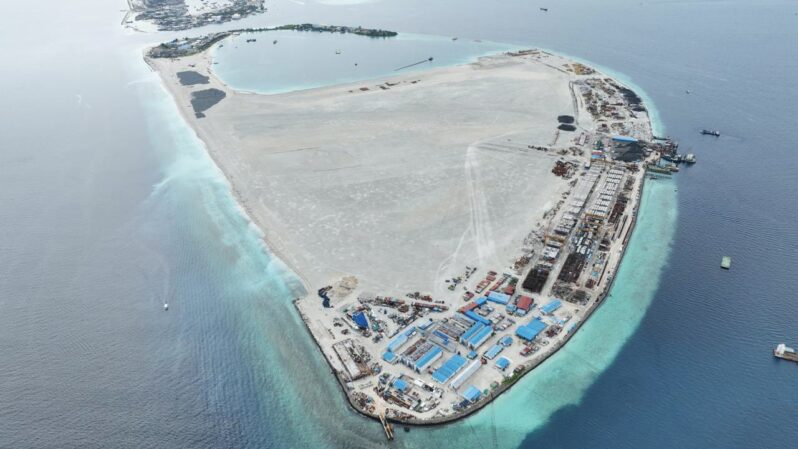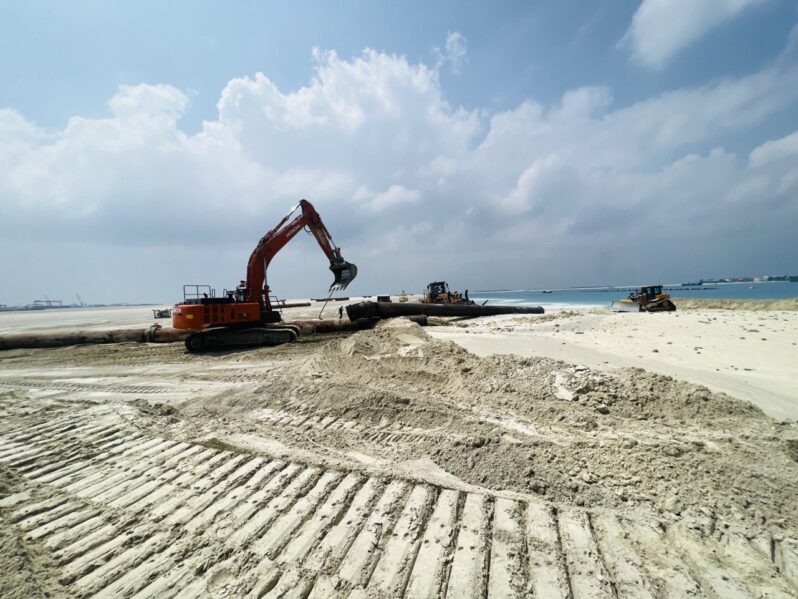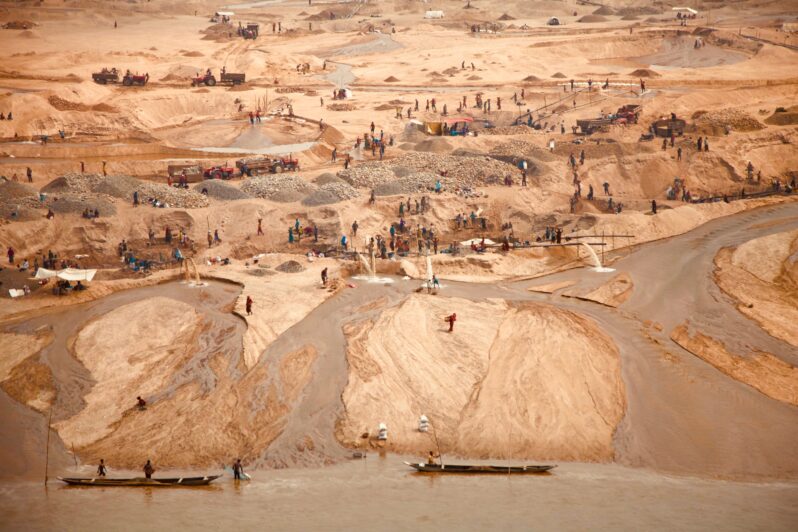The Maldives Is Racing To Create New Land. Why Are So Many People Concerned? – Nature

Sun, sand and sea.” Those are the three ingredients for tourism in the Maldives, Mohamed Shaiz’s father told him. For more than a decade, Shaiz’s family owned a successful local hotel in Addu, the Maldives’ southernmost atoll. But nearly 9 months ago, the government took away the sea…
Behind the Story: Land Reclamation in the Maldives – the Pulitzer Center

Most visitors come to the Maldives for its resorts and pristine beaches. For Pulitzer Center grantee Jesse Chase-Lubitz, there’s a story behind that sand…The Maldives face an existential threat from sea level rise, and rebuilding the coastline with dredged sand has become a popular solution. But a series of activists on the 1,200-island archipelago are questioning the tradeoffs…Through interviews with taxi drivers, hotel owners, politicians, and scientists, Chase-Lubitz found that land reclamation is not a one-size-fits-all policy…
How Saving The Maldives May Actually Destroy It – the Medium

Just imagine waking up one day to find the sea that was once at your doorstep replaced by a fake 130-meter beach. This is the new reality for the residents of Addu, the southernmost atoll of the Maldives. But this shocking transformation isn’t new — it’s a desperate move to keep the country above water and thriving…
Maldives to battle rising seas by building fortress islands – PHYS.ORG

Rising sea levels threaten to swamp the Maldives and the Indian Ocean archipelago is already out of drinking water, but the new president says he has scrapped plans to relocate citizens. Instead, President Mohamed Muizzu promises the low-lying nation will beat back the waves through ambitious land reclamation and building islands higher—policies, however, that environmental and rights groups warn could even exacerbate flooding risks…
Satellite Image Shows Construction of World’s First Floating City – Newsweek

A floating city, considered the world’s first, is starting to take shape in the turquoise waters of the Indian Ocean…Satellite imagery provided exclusively to Newsweek by Maxar Technologies shows the state of construction of the Maldives Floating City, a development of modular floating platforms that is scheduled to be completed in 2027….
Why Time Is Running Out Across the Maldives’ Lovely Little Islands – the New York Times

Global tourism brought a modern economy to the country’s thousand islands. For many Maldivians, the teeming capital beckons…
New islands are being built at sea – but they won’t help millions made homeless by sea-level rise – the Conversation

Dubai’s famous Palm Jumeirah is not the only man-made island to have emerged from the sea this century. Over the past 20 years, many islands have been built to accommodate both tourists and well-heeled residents – especially in the Arabian Gulf states and China..
Venice Isn’t Alone: 7 Sinking Cities Around the World – How Stuff Works

Many big cities sit near the ocean. They became cities in the first place because their ports facilitated trade and travel by sea.
Coastal cities all over the world are sinking — a geological process called subsidence — and it’s happening at a rate that makes scientists nervous. If these bits of land didn’t have important cities on them, it’s likely nobody would notice, or, in some cases, that they wouldn’t be sinking at all…
S A N D : Essential . . . Unregulated . . . and Dwindling

“Sand is the foundation of human construction and a fundamental ingredient in concrete, asphalt, glass and other building materials. But sand, like other natural resources, is limited and its ungoverned extraction is driving erosion, flooding, the salination of aquifers and the collapse of coastal defences…”
